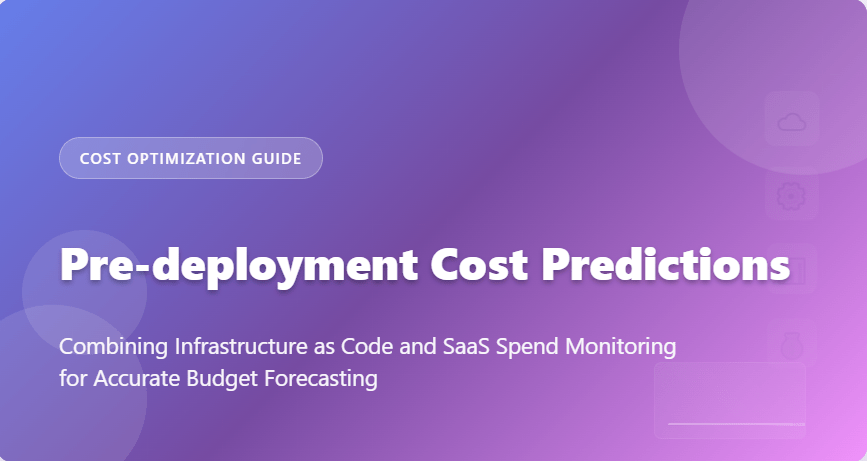
In today’s rapidly evolving digital landscape, organizations face unprecedented challenges in managing and predicting infrastructure and software costs before deployment. The combination of cloud computing complexity and the proliferation of SaaS solutions has created a perfect storm of cost unpredictability that can severely impact business budgets and operational efficiency.
Pre-deployment cost prediction has emerged as a critical capability for modern businesses seeking to maintain affordable cloud services while scaling their operations efficiently. This comprehensive approach involves forecasting the total cost of ownership for both infrastructure resources and software subscriptions before they are deployed or procured, enabling organizations to make informed decisions and avoid costly surprises.
The integration of Infrastructure as Code (IaC) cost estimation with SaaS spend monitoring represents a paradigm shift in how organizations approach financial planning for their technology stack. By combining these two essential components, businesses can achieve unprecedented visibility into their future spending patterns and optimize their resource allocation strategies accordingly.
This guide provides an in-depth exploration of how to effectively combine IaC cost prediction with SaaS spend monitoring to create a robust pre-deployment cost forecasting framework. Whether you’re managing a startup’s limited budget or overseeing enterprise-scale infrastructure, understanding these methodologies will help you maintain cost-effective operations while supporting business growth.
What is Pre-deployment Cost Prediction?
Pre-deployment cost prediction is the practice of estimating the total financial impact of cloud infrastructure and software solutions before they are actually deployed or purchased. This proactive approach to cost management enables organizations to make informed decisions about resource allocation, vendor selection, and architectural choices based on accurate financial projections.
Unlike traditional post-deployment cost monitoring, which reacts to spending patterns after resources are already consuming budget, pre-deployment prediction provides organizations with the foresight needed to optimize costs from the very beginning. This methodology encompasses both one-time deployment costs and ongoing operational expenses, including infrastructure usage, software licenses, maintenance, and support services.
The complexity of modern cloud environments, where resources can be provisioned and scaled dynamically, makes manual cost estimation increasingly unreliable. Automated pre-deployment cost prediction tools leverage historical data, current pricing models, and usage patterns to generate accurate forecasts that account for the dynamic nature of cloud computing.
For SaaS solutions, pre-deployment cost prediction involves analyzing user requirements, feature utilization patterns, and subscription models to determine the most cost-effective licensing approach. This includes evaluating different pricing tiers, assessing user adoption rates, and projecting long-term subscription costs based on organizational growth patterns.
The Role of Infrastructure as Code in Cost Prediction
Infrastructure as Code has revolutionized how organizations manage and deploy cloud resources by treating infrastructure configuration as software code. This approach provides unprecedented opportunities for cost prediction because infrastructure requirements are explicitly defined in code before deployment occurs.
IaC templates contain detailed specifications about the types, sizes, and configurations of cloud resources that will be provisioned. This information can be analyzed programmatically to generate accurate cost estimates before any resources are actually created. By parsing IaC configurations, automated tools can calculate the expected monthly costs for compute instances, storage volumes, network resources, and managed services.
The declarative nature of IaC makes it particularly well-suited for cost prediction because it explicitly defines the desired state of infrastructure resources. Tools can analyze these declarations against current cloud provider pricing APIs to generate real-time cost estimates that reflect the most up-to-date pricing information.
Modern IaC cost prediction tools go beyond simple resource-level calculations to provide sophisticated analysis of architectural patterns, resource dependencies, and scaling behaviors. They can identify potential cost optimization opportunities within the infrastructure design and suggest alternative configurations that achieve the same functional requirements at lower costs.
Cloud management strategies that incorporate IaC cost prediction enable organizations to iterate on infrastructure designs with full visibility into the financial implications of each architectural decision. This capability is particularly valuable for organizations implementing FinOps practices to optimize their cloud spending.
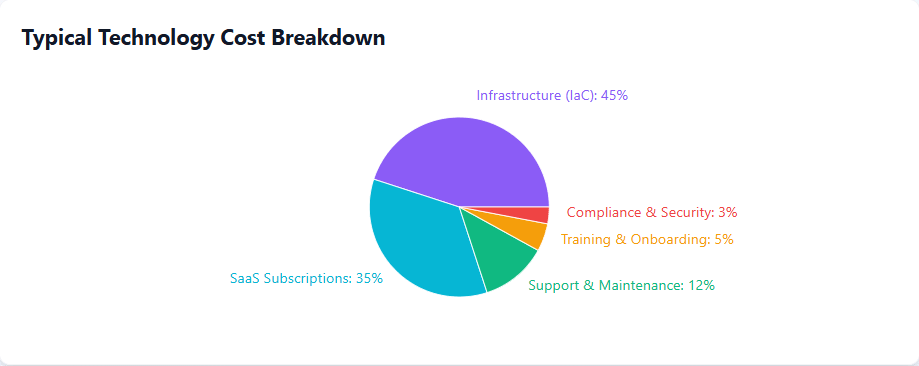
SaaS Spend Monitoring Integration
SaaS spend monitoring complements IaC cost prediction by providing visibility into the software licensing and subscription costs that support business operations. While IaC focuses on infrastructure resources, SaaS monitoring addresses the application layer where users interact with business-critical software solutions.
Effective SaaS spend monitoring involves tracking subscription costs, user adoption rates, feature utilization, and renewal schedules across the entire software portfolio. This comprehensive approach enables organizations to identify optimization opportunities, eliminate redundant subscriptions, and negotiate better terms with vendors.
The integration of SaaS spend monitoring with infrastructure cost prediction creates a holistic view of technology spending that encompasses both the underlying infrastructure and the applications running on top of it. This combined approach is essential for accurate total cost of ownership calculations and informed decision-making about technology investments.
Modern SaaS monitoring platforms provide automated discovery of software subscriptions, usage analytics, and cost optimization recommendations. These tools can identify underutilized instances of software licenses and suggest right-sizing opportunities that reduce unnecessary spending without impacting business functionality.
The predictive capabilities of advanced SaaS monitoring tools enable organizations to forecast future subscription costs based on user growth patterns, feature adoption rates, and historical usage data. This forward-looking perspective is crucial for budget planning and ensures that SaaS spending aligns with business objectives and growth projections.
Benefits of Combined Cost Prediction Strategies
The integration of IaC cost prediction with SaaS spend monitoring delivers significant advantages over traditional approaches to technology cost management. By combining these methodologies, organizations gain comprehensive visibility into their total technology spending and can make more informed decisions about resource allocation and vendor selection.
Enhanced Budget Accuracy: Combined cost prediction provides more accurate budget forecasts by accounting for both infrastructure and software costs in a unified model. This comprehensive approach reduces the likelihood of budget overruns and enables better financial planning for technology initiatives.
Improved Decision Making: With complete visibility into the cost implications of technology choices, organizations can evaluate alternatives more effectively and select solutions that optimize both functionality and cost-effectiveness. This capability is particularly valuable when choosing between different architectural patterns or software solutions.
Reduced Financial Risk: Pre-deployment cost prediction helps organizations identify potential cost risks before they impact budgets. By understanding the financial implications of scaling decisions, feature adoptions, and architectural changes, businesses can implement appropriate controls and monitoring to prevent unexpected expenses.
Optimized Resource Utilization: The combination of infrastructure and software cost monitoring enables organizations to identify opportunities for consolidation, right-sizing, and elimination of redundant resources. This optimization extends across both infrastructure resources and software licenses, maximizing the value derived from technology investments.
Streamlined Vendor Management: Comprehensive cost visibility enables better negotiations with both cloud providers and software vendors. Organizations can leverage usage data and cost projections to negotiate more favorable terms and eliminate unnecessary features or services.
Current State of Cost Prediction Technologies
The landscape of cost prediction technologies has evolved rapidly to address the growing complexity of modern technology environments. Today’s solutions leverage advanced analytics, machine learning, and real-time pricing data to provide accurate and actionable cost forecasts for both infrastructure and software spending.
Cloud providers have invested heavily in native cost prediction tools that integrate directly with their services. AWS Cost Explorer, Azure Cost Management, and Google Cloud Cost Management provide sophisticated forecasting capabilities that analyze historical usage patterns and account for seasonal variations in resource consumption.
Third-party cost management platforms offer additional capabilities that extend beyond single-cloud environments to provide multi-cloud cost prediction and SaaS spend monitoring. These platforms aggregate data from multiple sources to create comprehensive cost models that reflect the true complexity of modern technology stacks.
The integration of artificial intelligence and machine learning technologies has significantly improved the accuracy of cost predictions by identifying complex patterns in usage data that would be difficult to detect through traditional analysis methods. These advanced algorithms can account for factors such as seasonal variations, business cycles, and growth trends to generate more accurate long-term forecasts.
Real-time pricing integration ensures that cost predictions reflect the most current pricing information from cloud providers and software vendors. This capability is particularly important in dynamic pricing environments where costs can change frequently based on market conditions and competitive factors.
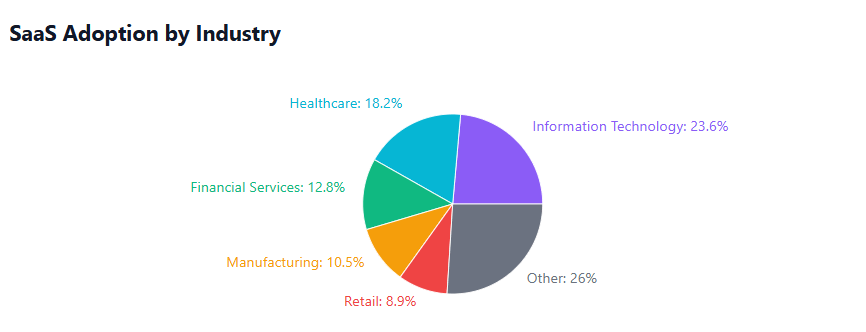
Emerging Trends in Cost Forecasting
Several emerging trends are shaping the future of cost forecasting technologies and methodologies. These developments promise to further improve the accuracy and utility of pre-deployment cost predictions while addressing the evolving needs of modern organizations.
AI-Powered Predictive Analytics: Advanced machine learning algorithms are increasingly being applied to cost forecasting challenges, enabling more sophisticated analysis of usage patterns and cost drivers. These AI-powered solutions can identify subtle correlations and trends that human analysts might miss, leading to more accurate predictions and better optimization recommendations.
Real-time Cost Optimization: The integration of real-time cost monitoring with predictive analytics enables dynamic optimization decisions that respond immediately to changing conditions. This capability allows organizations to automatically adjust resource allocations and subscription levels based on current needs and projected future requirements.
Integration with DevOps Workflows: Cost prediction tools are increasingly being integrated directly into development and deployment workflows, enabling developers to understand the cost implications of their architectural decisions in real-time. This shift-left approach to cost management helps prevent costly design decisions from reaching production environments.
Sustainability-Focused Cost Models: Growing environmental awareness is driving the development of cost models that incorporate sustainability metrics alongside traditional financial considerations. These models help organizations optimize for both cost-effectiveness and environmental impact, supporting corporate sustainability initiatives.
Cross-Platform Cost Intelligence: The rise of multi-cloud and hybrid environments has created demand for cost prediction tools that provide unified visibility across different platforms and services. These solutions aggregate cost data from multiple sources to provide comprehensive cost intelligence that reflects the true complexity of modern technology environments.
Best Practices for Pre-deployment Cost Management
Implementing effective pre-deployment cost management requires a systematic approach that combines appropriate tools, processes, and organizational practices. The following best practices have proven effective for organizations seeking to optimize their technology spending through proactive cost management.
Establish Cost Governance Frameworks: Successful pre-deployment cost management begins with clear governance frameworks that define roles, responsibilities, and approval processes for technology spending. These frameworks should establish cost thresholds that trigger additional review and approval requirements for larger expenditures.
Implement Automated Cost Gates: Integrate cost prediction tools into deployment pipelines to automatically evaluate the cost implications of infrastructure and software changes. These automated gates can prevent deployments that exceed predefined cost thresholds or flag potential optimization opportunities for manual review.
Develop Cost-Aware Architecture Standards: Create architectural guidelines that incorporate cost considerations alongside functional and performance requirements. These standards should promote the use of cost-effective design patterns and discourage practices that lead to unnecessary spending.
Regular Cost Reviews and Audits: Establish regular processes for reviewing actual costs against predictions to identify accuracy issues and improvement opportunities. These reviews should examine both infrastructure and software spending to ensure comprehensive cost oversight.
Cross-Functional Collaboration: Effective cost management requires collaboration between development, operations, finance, and procurement teams. Establish communication channels and shared metrics that enable these teams to work together effectively on cost optimization initiatives.
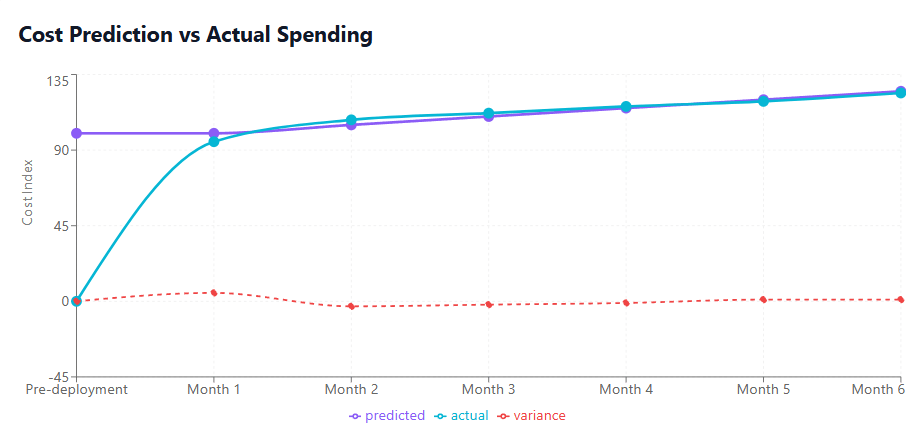
Tools and Technologies for Cost Prediction
The market for cost prediction tools has expanded significantly as organizations recognize the importance of proactive cost management. These solutions range from cloud-native tools provided by major cloud providers to specialized third-party platforms that offer advanced analytics and multi-cloud support.
Cloud-Native Cost Management Tools: Major cloud providers offer sophisticated cost management and prediction capabilities that integrate directly with their services. These tools provide detailed cost breakdowns, forecasting capabilities, and optimization recommendations based on actual usage patterns and pricing data.
Infrastructure as Code Cost Analyzers: Specialized tools for analyzing IaC templates provide cost estimates before infrastructure is deployed. These solutions parse infrastructure definitions and calculate expected costs based on current pricing information, enabling teams to optimize designs before deployment.
SaaS Management Platforms: Comprehensive SaaS management solutions provide visibility into software subscriptions, usage patterns, and optimization opportunities. These platforms often include predictive capabilities that forecast future subscription costs based on usage trends and organizational growth patterns.
Multi-Cloud Cost Management: Unified platforms that aggregate cost data from multiple cloud providers and SaaS vendors provide comprehensive visibility into total technology spending. These solutions are particularly valuable for organizations with complex, multi-vendor technology environments.
Financial Operations (FinOps) Platforms: Specialized FinOps platforms combine cost prediction, monitoring, and optimization capabilities in integrated solutions designed to support cloud financial management best practices. These platforms often include advanced analytics and reporting capabilities that enable sophisticated cost analysis and optimization.
Implementation Strategies
Successfully implementing pre-deployment cost prediction requires careful planning and a phased approach that considers organizational readiness, technical requirements, and change management needs. The following strategies have proven effective for organizations embarking on cost prediction initiatives.
Start with Pilot Projects: Begin implementation with small, well-defined pilot projects that demonstrate value and build organizational confidence in cost prediction methodologies. These pilots should focus on high-impact areas where cost optimization opportunities are most apparent.
Integrate with Existing Workflows: Ensure that cost prediction tools integrate seamlessly with existing development, deployment, and procurement workflows. This integration minimizes disruption and increases adoption by making cost considerations a natural part of existing processes.
Invest in Training and Education: Provide comprehensive training to ensure that team members understand how to effectively use cost prediction tools and interpret their outputs. This education should cover both technical aspects of the tools and broader cost management best practices.
Establish Clear Metrics and KPIs: Define clear success metrics that enable organizations to measure the effectiveness of their cost prediction initiatives. These metrics should include both financial outcomes (such as cost savings achieved) and operational improvements (such as budget accuracy).
Plan for Continuous Improvement: Implement processes for regularly reviewing and refining cost prediction approaches based on actual results and changing business needs. This continuous improvement approach ensures that cost prediction capabilities evolve with organizational requirements and technology changes.
Real-world Examples and Case Studies
Organizations across various industries have successfully implemented combined IaC and SaaS cost prediction strategies to achieve significant cost savings and improved budget accuracy. These real-world examples demonstrate the practical benefits of proactive cost management approaches.
Technology Startup Optimization: A fast-growing technology startup implemented automated cost prediction for their cloud infrastructure and SaaS subscriptions, enabling them to scale efficiently while maintaining predictable costs. By combining IaC cost analysis with SaaS usage monitoring, they achieved 35% cost savings compared to their previous reactive cost management approach.
Enterprise Cloud Migration: A large enterprise used pre-deployment cost prediction during their cloud migration initiative to evaluate different architectural approaches and vendor options. The comprehensive cost analysis enabled them to select the most cost-effective migration strategy and avoid potential budget overruns that could have exceeded $2 million annually.
Multi-Cloud Cost Optimization: A global organization with complex multi-cloud requirements implemented unified cost prediction across AWS, Azure, and Google Cloud environments. The integrated approach provided visibility into total cloud spending and enabled optimization decisions that reduced overall cloud costs by 28% while improving performance and reliability.
SaaS Portfolio Rationalization: A mid-size company used combined cost prediction and monitoring to rationalize their SaaS portfolio, identifying redundant subscriptions and right-sizing opportunities. The initiative resulted in 40% reduction in SaaS spending while maintaining full business functionality through better license utilization.
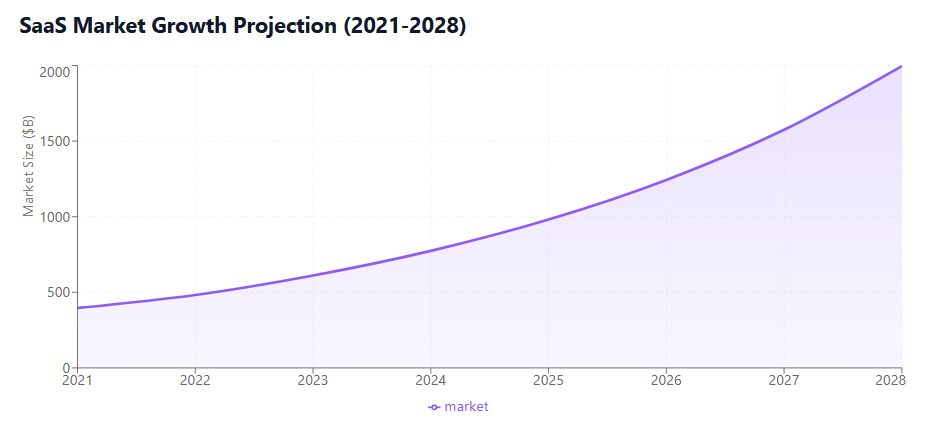
Optimizing Pre-deployment Cost Predictions with Binadox
Binadox provides comprehensive capabilities for implementing effective pre-deployment cost prediction strategies that combine Infrastructure as Code analysis with SaaS spend monitoring. The platform’s integrated approach enables organizations to achieve unprecedented visibility into their technology spending before resources are deployed or subscriptions are activated.
The platform’s IaC cost tracking feature provides detailed cost estimates for Terraform configurations, enabling teams to understand the financial implications of infrastructure changes before deployment. This capability integrates seamlessly with existing DevOps workflows and provides real-time cost feedback during the development process.
For SaaS spend monitoring, Binadox offers automated discovery and tracking of software subscriptions across the organization. The platform’s predictive analytics capabilities forecast future subscription costs based on usage patterns and organizational growth, enabling better budget planning and vendor negotiations.
Binadox’s unified dashboard provides comprehensive visibility into both infrastructure and software costs, enabling organizations to make informed decisions about technology investments and optimization opportunities. The platform’s automated recommendations help identify potential cost savings and optimization opportunities across the entire technology stack.
The platform’s integration capabilities enable seamless connectivity with popular cloud providers, SaaS applications, and financial systems, ensuring that cost prediction models reflect accurate and up-to-date information from all relevant sources.
Organizations using Binadox for pre-deployment cost prediction typically achieve significant improvements in budget accuracy and cost optimization outcomes. The platform’s comprehensive approach ensures that both infrastructure and software costs are effectively managed and optimized throughout their lifecycle.
Conclusion
The combination of Infrastructure as Code cost prediction with SaaS spend monitoring represents a fundamental advancement in how organizations approach technology cost management. This integrated methodology provides comprehensive visibility into total technology spending and enables proactive optimization decisions that deliver significant financial benefits.
As cloud environments continue to grow in complexity and SaaS adoption accelerates across all industries, the importance of effective pre-deployment cost prediction will only increase. Organizations that invest in these capabilities today will be better positioned to manage costs effectively and maintain competitive advantages in an increasingly digital business environment.
The key to success lies in implementing comprehensive approaches that address both infrastructure and software costs while integrating seamlessly with existing workflows and processes. By combining appropriate tools, best practices, and organizational capabilities, businesses can achieve unprecedented control over their technology spending and optimize their investments for maximum value.
Organizations considering pre-deployment cost prediction initiatives should focus on building capabilities gradually while demonstrating value through pilot projects and measurable outcomes. This approach ensures sustainable adoption and continuous improvement while minimizing implementation risks and organizational disruption.
The future of cost management lies in proactive, prediction-based approaches that enable organizations to optimize spending before costs are incurred. By embracing these methodologies and investing in appropriate tools and capabilities, businesses can maintain cost-effective operations while supporting growth and innovation in an increasingly competitive marketplace.

